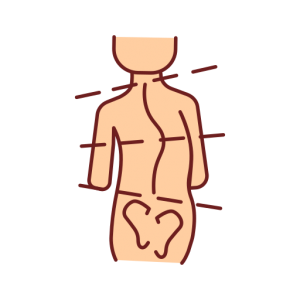
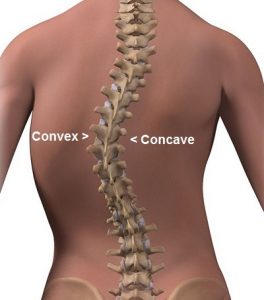
Equipped with an mTrigger device and this knowledge, biofeedback can be a means to help patients with scoliotic curves less than 20 deg.(1) The use of biofeedback with posture and exercises can help improve movement patterns and motor learning ability. This in turn can lead to improved posture, balance, and muscle symmetry.(1)
Here is an example. Adolescents with scoliosis demonstrate an asymmetrical pattern of muscle activation of the traps, lats, paraspinals, and erector muscles in both sitting and standing postures.(1) The side of greater activation is related to the direction of spinal curvature. Regardless, cueing and biofeedback were effective in helping to correct and balance out sitting and standing postures.(1)
Try using mTrigger biofeedback to provide immediate feedback of results during postural training in standing or sitting posture. For 5 min, sit or stand in an ideal posture with mTrigger biofeedback on the traps, lats, or paraspinals / erectors. Allow the mTrigger to indicate when the EMG drops below a certain threshold or when muscle activation becomes unbalanced through the use of the audio feedback function or by watching the meters.(2) You’ll find more on how in this blog here and here.
Here is one way you could set it up:
Channel one is on the lumbar paraspinals and channel two is on the thoracic paraspinals/lats of the convex side of the curve.
Patients who perform this postural exercise over 30 sessions demonstrated a significant improvement in symmetrical muscle activity.(2) In addition to improving symmetry of muscle activation, patients who used biofeedback training showed minimal to no progression of their spinal curve.(2)
As noted previously, there is a reduction in activation level of the muscles on the concave side of the scoliotic curve. Over time, as muscle activity continues to decrease, inactivity leads to a loss of slow twitch muscle fibers.(3) This imbalance in muscle activity is frequently followed by connective tissue tightening which reduces flexibility of the spine, as well as the surrounding musculature. This loss of mobility makes self-postural spinal corrections much more difficult. Furthermore, these asymmetries in muscle activity only increase with greater curve progression.(2)
The following exercises were shown to be beneficial when it comes to balancing asymmetric muscle patterns and stretching the spine in those with single curvature scoliosis.(3)
By placing the concave side arm overhead then raising the trunk and arm off the table and holding, muscle activation in the weaker side was encouraged.(3)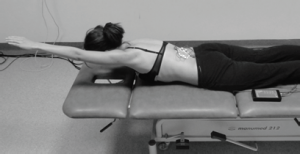
Notice how this patient keeps the thoracic and scapular muscles engaged the whole time so channel two stays more active while channel one, the lumbar paraspinals, turns on and off with the motion.
For the second exercise, placing the concave arm overhead resulted in a stretching of the concave side of the curve.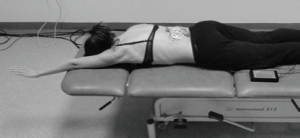
For the symmetric exercises, place both arms overhead and life the arms and legs off the table and hold.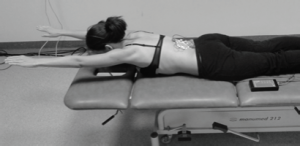
Finally, stabilizing the truck and shoulder girdle, lift both legs off the table and hold. 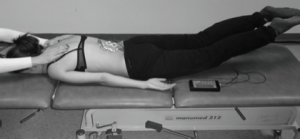
The use of biofeedback for patients with mild scoliosis can be a way to attenuate asymmetric paraspinal muscle activity in these individuals.(2) With that, remember that each individual has a unique set of factors impacting the biomechanics, presentation, and progression of their curve. Using EMG biofeedback as a tool to analyze paraspinal muscle activity can guide appropriate individual treatment when it comes to treating scoliosis.(3) In addition to the exercises demonstrated above, remember, there a many additional exercise that can be used with mTrigger biofeedback for individuals with scoliosis. Equipped with your clinical knowledge and the patient in front of you, get creative!
Summary
For patients with scoliosis, the use of mTrigger biofeedback is a way to increase active participation in exercises, improve patients body awareness, and help promote muscle re-education during scoliosis specific rehabilitation exercises.(2) While patient with a single curve tend to benefit more from sEMG biofeedback during exercise, it can still provide tremendous benefit for those with a double curve.(1)
References
1. Kwok G, Yip J, Cheung MC, Yick KL. Evaluation of Myoelectric Activity of Paraspinal Muscles in Adolescents with Idiopathic Scoliosis during Habitual Standing and Sitting. Biomed Res Int. 2015;2015. doi:10.1155/2015/958450
2. Cheung MC, Yip J, Lai JSK. Biofeedback Posture Training for Adolescents with Mild Scoliosis. Biomed Res Int. 2022;2022. doi:10.1155/2022/5918698
3. Chwała W, Koziana A, Kasperczyk T, Walaszek R, Płaszewski M. Electromyographic assessment of functional symmetry of paraspinal muscles during static exercises in adolescents with idiopathic scoliosis. Biomed Res Int. 2014;2014. doi:10.1155/2014/573276
Images
1. https://www.scoliosissos.com/blog/what-is-levoconvex-scoliosis
2. https://www.flaticon.com/free-icon/scoliosis_6850131
3. Chwała W, Koziana A, Kasperczyk T, Walaszek R, Płaszewski M. Electromyographic assessment of functional symmetry of paraspinal muscles during static exercises in adolescents with idiopathic scoliosis. Biomed Res Int. 2014;2014. doi:10.1155/2014/573276
How to Know if Biofeedback is the Right Tool
|
Using Biofeedback to Rehab Rotator Cuff Repairs
|





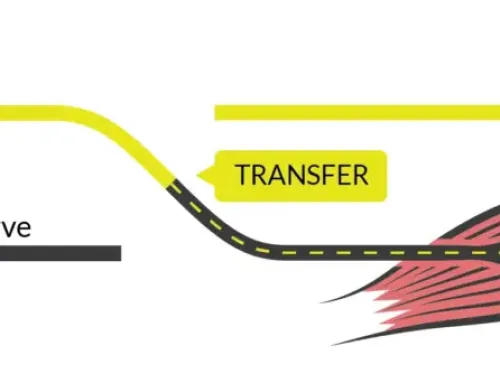
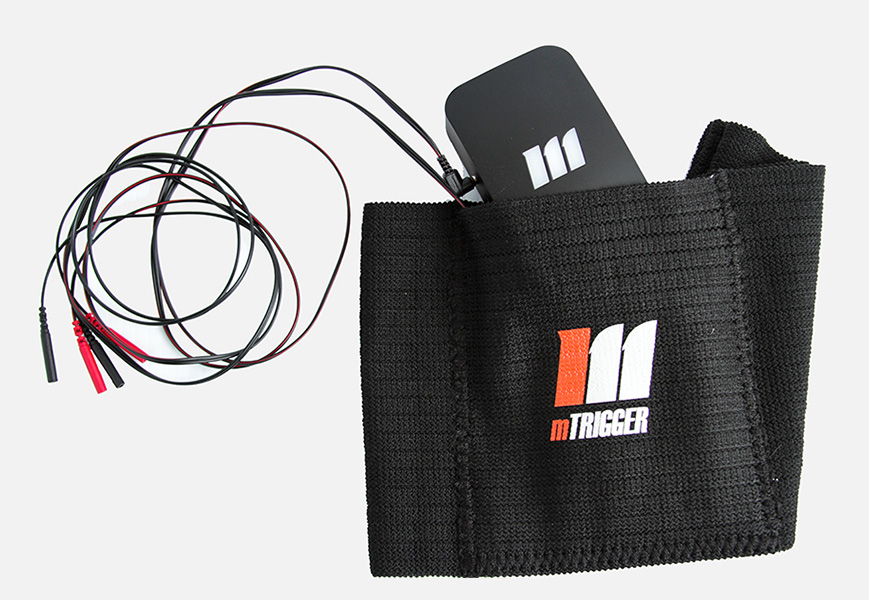

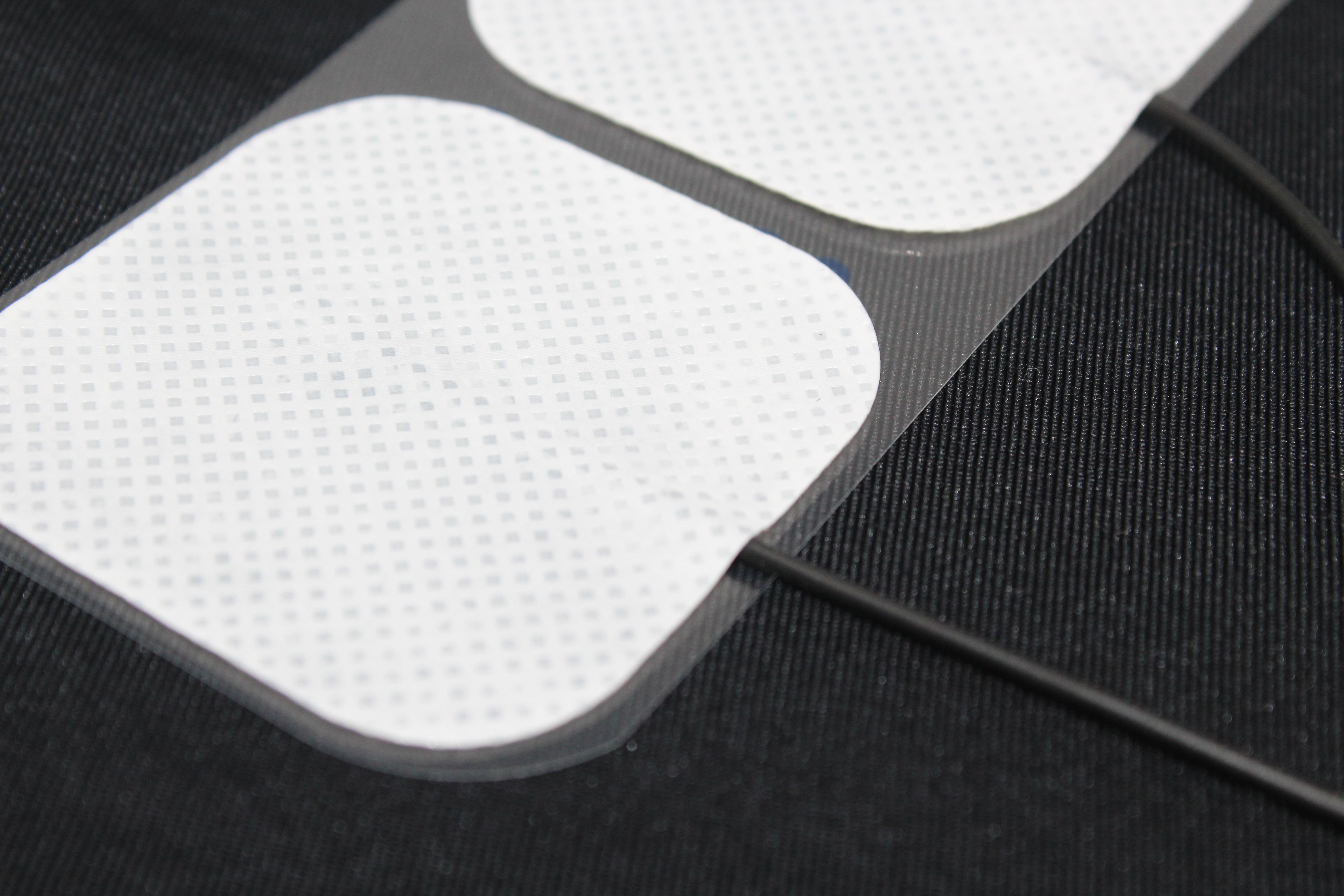
Leave A Comment